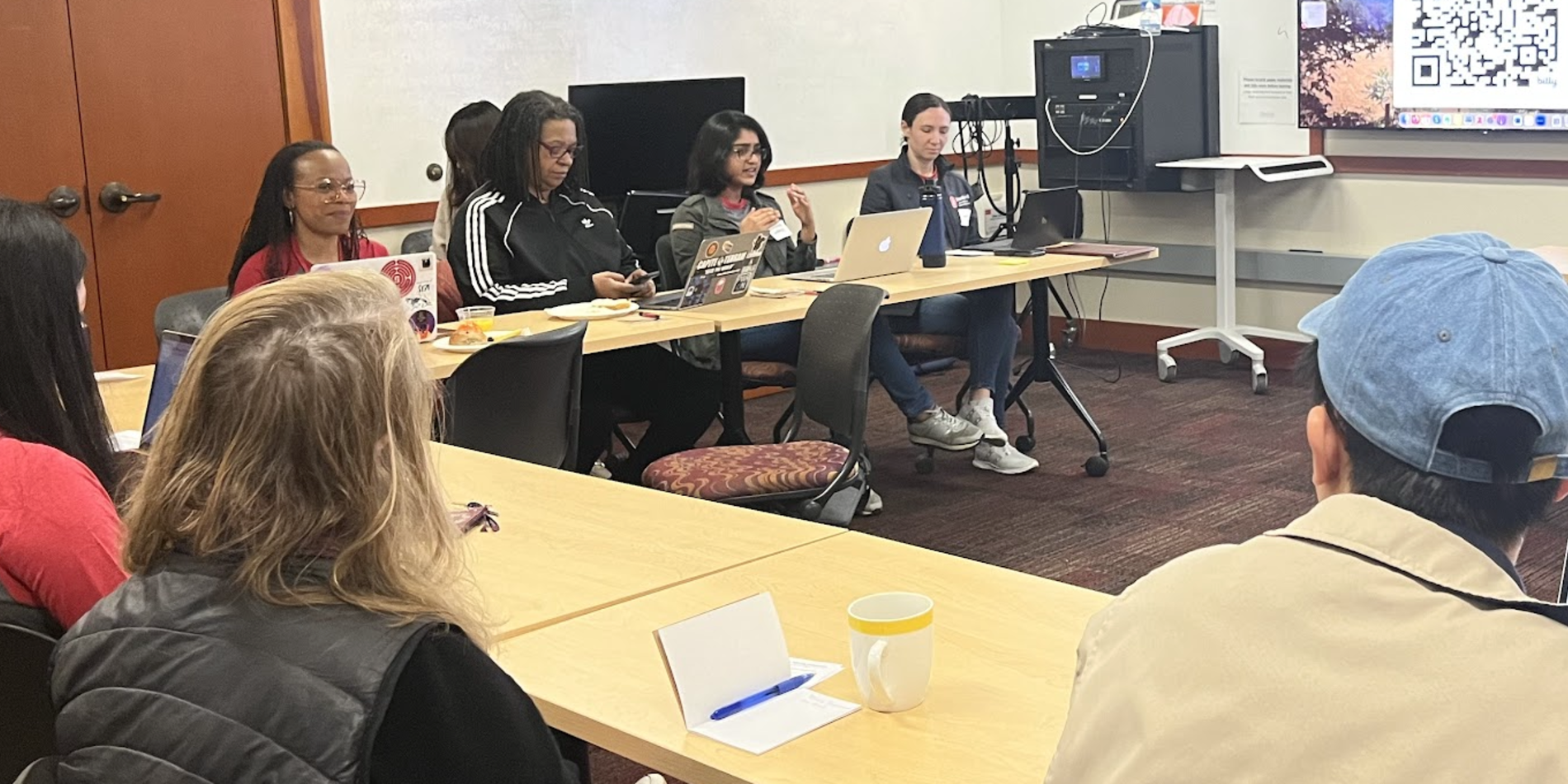Cultural Rhetorics in Theory & Practice - Readings for September Sessions 2017
This year's September Sessions theme, "Cultural Rhetorics," will open up questions from rhetoric in the field that our program will likely interrogate all year long. For this issue of "Rhetoric in the Field," we'll share the core readings from September Sessions that will frame our program's understanding of what cultural rhetoric is and how it impacts our classroom practice.
Our Core Readings
Bratta, P. & Powell, M. “Introduction to the special issue: Entering the cultural rhetorics conversations.” Enculturation: a journal of rhetoric, writing and culture 21, 2016.
Bratta and Powell provide a brief intellectual history of cultural rhetorics and gives readers a clear sense of some definitions of what cultural rhetorics is and can look like.
Mao, L. “Thinking beyond Aristotle: The turn to how in comparative rhetoric.” PMLA, 129 (3), 2014, 448-455.
Mao offers a critical rhetorical comparison of different rhetorical traditions. This article re-frames an understanding of Western rhetoric and puts it in the context of a cultural comparative conversation.
In addition to the core readings from Bratta & Powell and Mao, smaller working groups of individuals will also choose an additional reading that interrogates questions at the intersection of cultural rhetorics and classroom practice. These readings have clear pedagogical implications for our program.
Assessment & Cultural Rhetoric
Required
Balester, Valerie. “How Writing Rubrics Fail: Toward a Multicultural Model.” Race and Writing Assessment. Edited by Inoue, Asao B., and Mya Poe. Studies in Composition and Rhetoric, vol. 7. Peter Lang, 2012, 63-78.
Behm, Nicolas & Keith D. Miller. “Challenging the Frameworks of Color-Blind Racism: Why We Need a Fourth Wave of Writing Assessment Scholarship.” Edited by Inoue, Asao B., and Mya Poe. Studies in Composition and Rhetoric, vol. 7. Peter Lang, 2012, 63-78.
Optional
Inoue, Asao B., and Mya Poe, editors. Race and Writing Assessment. Studies in Composition and Rhetoric, vol 7. Peter Lang, 2012.
“Special Issue: Toward Writing Assessment as Social Justice.” College English, vol. 79, no. 2, November 2016.
Style, Form, Convention & Cultural Rhetoric
Required:
Bawarshi, Anis. "The challenges and possibilities of taking up multiple discursive resources in US college composition." Edited by Horner, Lu, and Paul K. Matsuda. Cross-Language Relations in Composition (2010): 196-203.
Royster, Jacqueline Jones. "When the first voice you hear is not your own." College Composition and Communication 47.1 (1996): 29-40.
Optional:
Lu, Min-Zhan. "Professing multiculturalism: The politics of style in the contact zone." College composition and communication 45.4 (1994): 442-458.
Matsuda, Paul Kei. "The myth of linguistic homogeneity in US college composition." College English 68.6 (2006): 637-651.
Classroom Environment and Infrastructure & Cultural Rhetoric
Required:
Optional:
Assignments and Syllabi & Cultural Rhetoric
Required:
Jordan, Jay. “Composing Intercultural Relationships.” Redesigning composition for multilingual realities. Conference on College Composition and Communication of the National Council of Teachers of English, 2012: 117-143.
Bawarshi, Anis. "Sites of invention: Genre and the enactment of first-year writing." Concepts in composition: Theory and practice in the teaching of writing (2012): 208-225.
Optional:
Agger, Ben, and Beth Anne Shelton. "Time, Motion, Discipline: The Authoritarian Syllabus on American College Campuses." Critical Sociology 43.3 (2017): 355-369.
Baecker, Dianne L. “Uncovering the Rhetoric of the Syllabus: The Case of the Missing I.” College Teaching. 46.2 (1998). 58-62.
Womack, Anne-Marie. "Teaching Is Accommodation: Universally Designing Composition Classrooms and Syllabi." College Composition and Communication 68.3 (2017): 494.
Multimodality & Cultural Rhetoric
Required:
Alvarez, Sara et al. "On Multimodal Composing." Kairos 21.2 (2017).
(Many will want to engage with all of the included video texts. We suggest watching at least three of these multimedia texts: Sara P. Alvarez: Cuando Escribo; Khirsten L. Echols: Composing with Black Noise; & Amy Nichols: Composing Relationships and Experiences)
Optional:
Shipka, Jody. "Transmodality in/and processes of making: Changing dispositions and practice." College English 78.3 (2016): 250.
Oral Presentation & Cultural Rhetoric
Required:
Chawla, Devika, and Amardo Rodriguez. "Postcoloniality and the speaking body: Revisioning the English oral competency curriculum." Cultural Studies? Critical Methodologies 11.1 (2011): 76-91.
Conquergood, Dwight. "Rethinking elocution: The trope of the talking book and other figures of speech." Text and Performance Quarterly 20.4 (2000): 325-341.
Optional:
Hao, Richie Neil. "Rethinking critical pedagogy: Implications on silence and silent bodies." Text and Performance Quarterly 31.3 (2011): 267-284.
McGee, Ebony O., and Lasana Kazembe. "Entertainers or education researchers? The challenges associated with presenting while black." Race Ethnicity and Education 19.1 (2016): 96-120.
McKerrow, Raymie E. "Corporeality and cultural rhetoric: A site for rhetoric's future." Southern Journal of Communication 63.4 (1998): 315-328.
Warren, John T. “The Body Politic: Performance, Pedagogy, and the Power of Enfleshment.” Text and Performance Quarterly 19 (1999): 257-66.
“Performative Pedagogy, At-Risk Students, and the Basic Course: 14 Moments in Search of Possibility,” Basic Communication Course Annual 15 (2003): 83-116.
“Reflexive Teaching: Toward Critical Autoethnographic Practices off/in/on Pedagogy.” Contestation and Opportunity in Reflexivity. Cultural Studies Critical Methodologies 11 (2011): 130-144.
Tutoring and Conferencing & Cultural Rhetoric
Required:
Garcia, Romeo. “Unmaking Gringo-Centers.” The Writing Center Journal 36.1 (2017): 29-60.
Johnson, Michelle T. "Racial Literacy and the Writing Center." Writing Centers and the New Racism: A Call for Sustainable Dialogue and Change, edited by Laura Greenfield and Karen Rowan, Utah State University Press, 2011. 222-238.



